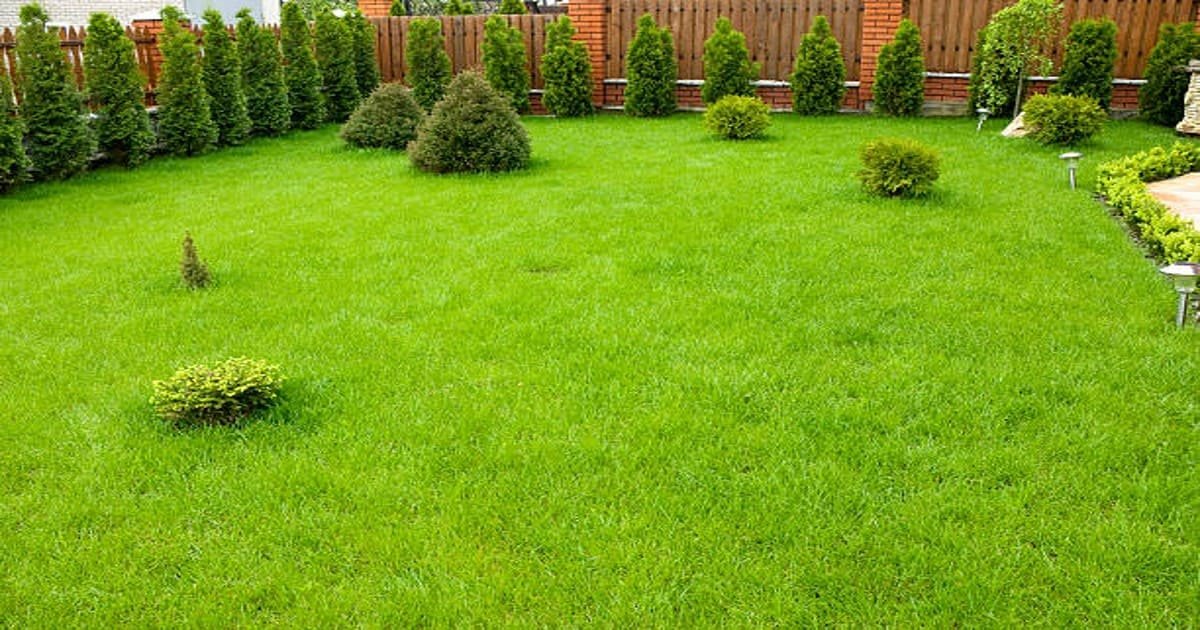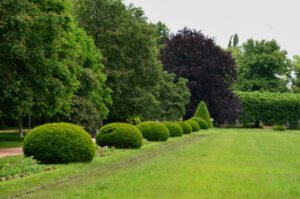When creating a residential landscape, the key step is to have a detailed plan in place. This will ultimately save you both time and money, and increase the likelihood of a successful outcome. The development of a master plan follows a systematic ‘design process’ that takes into account environmental factors, your personal preferences, and the fundamental elements and principles of design. The ultimate objective is to arrange the natural and man-made elements in your yard to achieve an appealing, practical, and sustainable landscape.
Are you looking to transform your outdoor space into a stunning oasis that reflects your style and personality? Whether you have a sprawling backyard or a cozy patio, landscape design is the key to creating an inviting and functional environment. Today, we will walk you through the six essential steps to achieve the perfect landscape design. From defining your goals to selecting plants and materials, we’ve got you covered!
So, grab your gardening gloves and get ready to unleash your creativity with Soil and Seed Landscaping in Clarence NY!
Step 1: Define your purpose and goals
When starting your landscape design journey, it’s crucial to first define your purpose and goals. Take some time to envision what you want your outdoor space to look and feel like. Are you aiming for a serene retreat, a vibrant garden oasis, or a functional entertaining area? Clarifying your intentions will guide the entire design process.
Consider how you plan to use the space – whether it’s for relaxation, hosting gatherings, gardening, or all of the above. Understanding how you want to interact with your outdoor environment will help shape the layout and features of your landscaping project.
Think about any specific elements that are must-haves in your design. Whether it’s a cozy seating area, colorful flowers, a vegetable garden, or pathways connecting different areas – identifying these key components early on will ensure they are incorporated seamlessly into the final plan.
By defining clear objectives and aspirations for your landscape design project from the outset, you set yourself up for success in creating an outdoor space that truly reflects your vision and enhances both the beauty and functionality of your property.
Step 2: Assess your space and consider the elements
When it comes to landscape design, assessing your space is a crucial step in creating a beautiful outdoor environment that suits your needs and preferences. Start by taking a good look at the area you have to work with. Consider the size, shape, and any existing features that you want to incorporate or work around.
Think about the elements that will impact your design, such as sunlight exposure, soil quality, drainage patterns, and existing vegetation. Understanding these factors will help you make informed decisions when planning your landscape layout. Take note of any challenges or limitations that may affect your design choices.
Consider how you want to use the space – whether it’s for entertaining guests, gardening, relaxation, or all of the above. This will guide you in determining what elements are essential for your landscape design. Keep in mind the practical aspects as well; accessibility, privacy needs, and views from inside your home should also be taken into account.
By thoroughly assessing your space and considering all these elements upfront, you’ll be better equipped to create a functional and visually appealing landscape design tailored to meet your specific requirements.
Important Read: 8 Elemental Principles of Residential Landscape Design
Step 3: Create a rough sketch or layout
So, you’ve defined your purpose and assessed your space – now it’s time to get creative with a rough sketch or layout for your landscape design. This step is where your vision starts to take shape on paper before becoming a reality in your outdoor space.
Grab some graph paper and start mapping out the different areas of your yard – think about where you want pathways, seating areas, flower beds, and other features to be located. Don’t worry about making it perfect at this stage; the rough sketch is meant to serve as a guide for the next steps in the design process.
Consider how each element will flow together harmoniously in your overall design. Play around with different layouts until you find one that feels right for the space. Remember, this is just a starting point, and adjustments can always be made as you refine your plan further down the line.
The key here is to let your creativity shine through while keeping practicality in mind – after all, you want a design that not only looks beautiful but also functions well for your needs. So grab those pencils and start sketching out your dream outdoor oasis!
Step 4: Choose plants and materials
When it comes to choosing plants and materials for your landscape design, the options are vast and exciting. Consider the climate of Clarence, NY, when selecting plants to ensure they thrive in the local conditions. Opt for a mix of native plants and ornamentals to create a visually appealing yet sustainable garden.
Select materials that complement your overall design aesthetic. Whether you prefer natural stone pathways or colorful mulch beds, make sure your choices align with your vision for the space. Think about textures, colors, and functionality when making these decisions.
Consult with local nurseries or landscaping professionals for advice on plant selection based on soil types and sunlight exposure in your yard. This will help you create a cohesive and thriving landscape that enhances the beauty of your home. Remember, variety is key – mix different plant sizes, shapes, and colors to add depth and interest to your outdoor space.
Step 5: Consider maintenance and sustainability
When it comes to landscaping, considering maintenance and sustainability is crucial for the longevity of your design. Think about how much time you can dedicate to upkeep and choose plants that fit your schedule. Opt for low-maintenance options like native plants that are suited to your climate.
Incorporate sustainable practices such as using organic fertilizers and mulch to nourish your soil naturally. This not only benefits the environment but also promotes healthy plant growth. Consider installing a rainwater harvesting system or drip irrigation to conserve water and reduce waste.
Choose materials that are durable and require minimal upkeep, such as composite decking or natural stone pathways. Designing with sustainability in mind not only reduces ongoing maintenance needs but also lowers long-term costs while benefiting the ecosystem around you.
Step 6: Implement and maintain your design
After you have carefully planned your landscape design and selected the perfect plants and materials, it’s time to bring your vision to life. Implementation is where all your hard work pays off as you transform your outdoor space into a beautiful oasis.
Start by preparing the area for planting, ensuring proper soil preparation and drainage for healthy growth. Follow your layout or rough sketch closely to ensure everything is placed correctly before proceeding with planting.
When it comes to maintenance, regular care is essential to keep your landscape looking its best year-round. This includes watering, pruning, weeding, and fertilizing as needed. Consider sustainable practices like composting or using organic products to promote a thriving ecosystem in your garden.
Remember that landscaping is an ongoing process – as plants grow and seasons change, adjustments may be necessary. Stay attentive to the needs of your garden and make changes accordingly to maintain a vibrant and flourishing outdoor space for years to come.
FAQs
Q: How do I know what plants will thrive in my area?
A: Consider your local climate, soil type, and sunlight levels when selecting plants for your landscaping.
Q: Can I incorporate sustainable practices into my landscape design?
A: Absolutely! You can choose native plants, install a rain garden, or use permeable paving to promote sustainability.
Q: Is professional help necessary for landscape design?
A: While DIY is an option, consulting with experts can provide valuable insights and ensure successful outcomes.
Q: How can I maintain my landscaping once it’s done?
A: Regular watering, pruning, weeding, and mulching are essential tasks to keep your landscape looking its best.
Conclusion
Landscaping design is a creative and fulfilling process that allows you to transform your outdoor space into a beautiful and functional area. By following the six steps outlined in this article – from defining your goals to implementing and maintaining your design – you can create a landscape that enhances the beauty of your home while also reflecting your personal style.
Remember, with careful planning and consideration, even affordable landscaping projects in Clarence, NY by Soil and Seed Landscaping can result in stunning results that you can enjoy for years to come. Happy landscaping!




